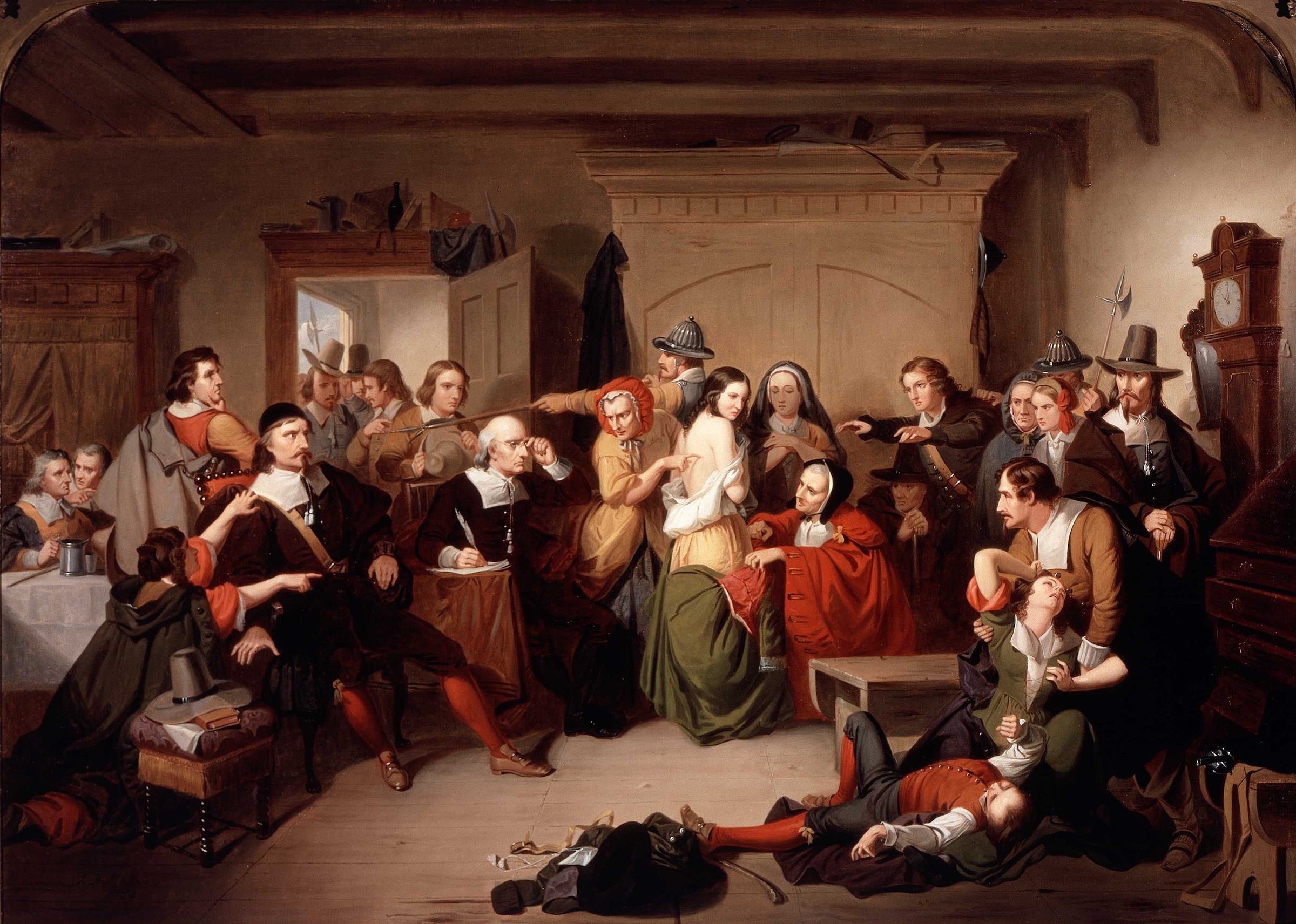In art history, the Salem witch trials often take the form of the most cinematic moments: arrest, prosecution, and execution. These images define our popular understanding of this historic event, told through the lens of its most public moments. But we see very little of the reams of paperwork that made this possible — and how these trials eventually came to an end.
There’s an astonishing moment in Witchcraft: A History in Thirteen Trials by Marion Gibson, professor of Renaissance and Magical Literatures at the University of Exeter in England. Describing the infamous Salem witch trials, she points out that by 1693, some 200 people — the majority of whom were women — were awaiting trial, and the civilians of Massachusetts began to protest.
“Whatever demonology said,” Gibson writes, “there could not be so many witches. As well as becoming theologically implausible, the number of trials was organizationally unsustainable, and the court system collapsed under a backlog.” As a result, an entirely new court and an updated law were formed for the rest of the cases. The trials, Gibson shows us, functioned like any other trials: with paperwork, protests, politics, and people mixed into an often messy and bureaucratic process that required state intervention to adapt. And while the author embarks on a journey through the legal and procedural considerations of witch trials from the 17th century to today in places like England, the United States, France, and the former British colony of Basutoland in present-day Lesotho, she never lets us lose sight of the accused persons caught up in them, often suffering under an existing culture of misogyny, ableism, enslavement, and colonization.
Gibson begins with a simple question: “What is a witch?” The answer is deeply political. Magic, she notes, has been with humanity for a very long time, and while witches seem to be creatures from time immemorial, she argues that they represent a specific shift during Europe’s Medieval period. By the 15th century, Christian institutions drew a distinction between daily magic and the work of God, which “were thought of as springing from religious truth, a special class of power reserved for Christian clergymen.”
Witch accusations emerged during a particularly polarizing time, when the Reformation led Catholics and Protestants alike to try to find the influence of the devil in each other’s religious practices. Before this point, Gibson writes, “most churchmen regarded the healers and diviners in their communities as ineffective fantasists — mild sinners trafficking in charms and curses who couldn’t do much harm.” But by the time of the Reformation, identifying heretics naturally progressed into identifying witches.
Gibson takes us into the world of those accused, offering a modern-day interpretation that frames their trials through the lens of state power and marginality, in which visual culture and art played a significant role. She considers the trial of Elizabeth Clarke, a young mother with one leg who was accused of witchcraft in the 17th century in England. Deviating from feminine ideals by having a physical disability, no husband, and very little money, Clarke was already living in the margins when she was accused of having odd conversations with animals, who might have been her familiars.
Upon arrest, Clarke was subjected to interrogation and torture. Women examined her body for “demonic marks,” in the form of small bites of blood that the familiars would have taken as rewards. She was also subjected to a form of sleep deprivation called “watching and walking,” which would keep her moving and awake for days to maximize the chances that a familiar might appear. As Gibson points out, these are the conditions under which people might make false confessions. Clarke inevitably succumbed and promised to show her watchers her “imps.” She was eventually sentenced to the gallows alongside nearly 30 other accused women.

The storytelling in Witchcraft takes great care to help us see those accused as people with interior lives and extraordinary ordeals that intersect with the harrowing realities of empire. In another chapter, Gibson works to piece together the life of Tatabe, an enslaved Indigenous woman who may have grown up in present-day Venezuela before being captured and sold in Barbados. She would be one of the first people accused of witchcraft in the infamous Salem witch trials.
Tatabe is popularly known as Tituba today, but Gibson chose to use the former name, both because of its probable historical accuracy and because doing so separates the human from the legend and myth surrounding her. Historic depictions of her, like an unattributed engraving in London’s Mary Evans Picture Library, show her in grotesque form, playing on the racialized and xenophobic fears of a rising nation-state. Tatabe was eventually released by a grand jury in the scrutiny surrounding the trials. Gibson and other historians aren’t sure quite what happened to her after that, but Witchcraft makes an effort to restore her humanity in this retelling.
Traversing centuries, Gibson argues that the witch trials continued past Salem through colonization, World War II, and into today. They never ended, instead transforming over time, all the while relying on the mechanisms of the justice system. And while I would have loved to see further discussion of the embrace of witchcraft as an act of political resistance, the tight scope of the book gives us detailed context for why such resistance holds merit: Trials like this have a historic beginning just a few hundred years ago and, as such, will one day have a historic end as attitudes toward women, magic, and people from colonized countries shift and evolve.

Witchcraft: A History in Thirteen Trials (2024) by Marion Gibson is published by Scribner Book Company and is available online and through independent booksellers.

